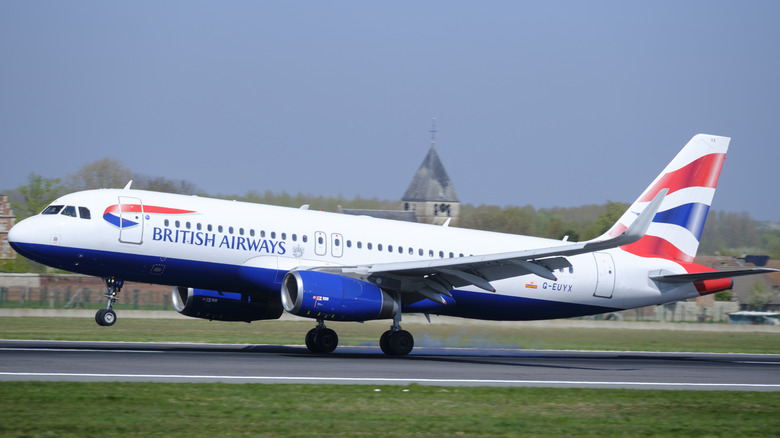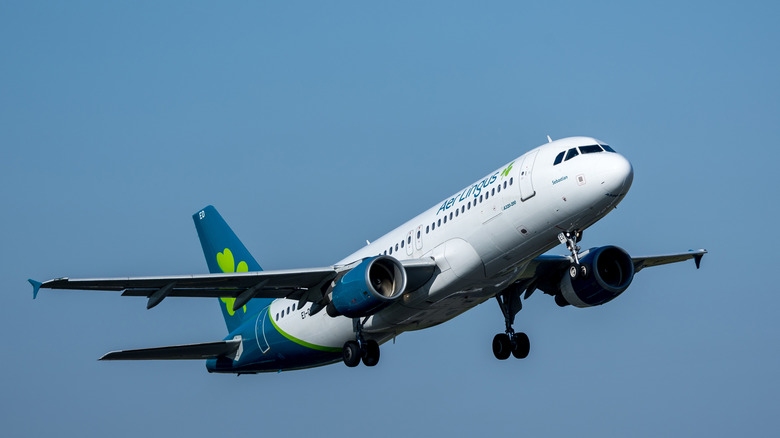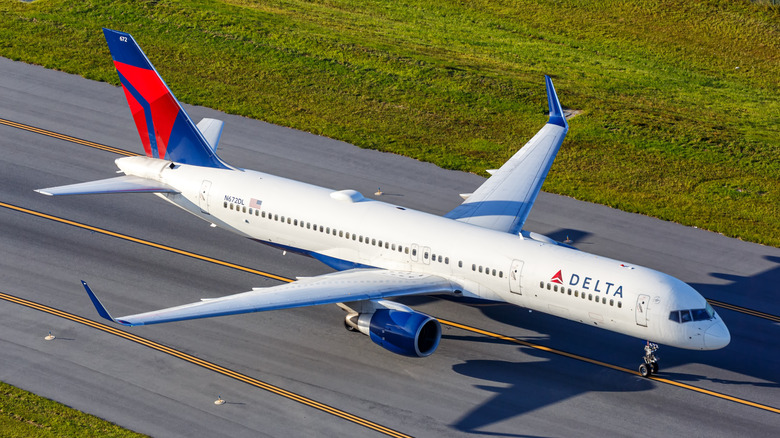Why Do Some Planes Make A Weird Barking Sound?
Though airplanes are considered among the safest ways to travel, many of us consider flying to be a challenging enough experience at the best of times. Even a short-haul trip can be harrowing, and one thing that's certainly not going to calm any anxious travelers' nerves is an unexpected sound coming from the great metal bird in question. A weird barking sound is the sort of thing that you might not give a second thought to after experiencing it and understanding that it's harmless, but it can be distinctly unnerving the first time around.
The Airbus A320 and A330 are particularly notable for making this odd sound. These are some of the most common planes in our skies, in the single-aisle and widebody realms, respectively, and so hearing this peculiar 'barking' is far from a rarity. The reason for the noise is a particular component of the aircraft, namely, a power transfer unit that is used to manage power between its hydraulic systems.
The power transfer unit's job is to keep the pressure among the systems stable during single-engine operation, should it drop in one of the systems. It begins its operations when those pressures drop below a particular threshold. While it's active, you guessed it, it makes quite a lot of noise, as though it's barking away.
When the noisy power transfer unit kicks in
The power transfer unit is designed to help ease the crew's workload by kicking in automatically when needed. The trigger for doing so is a substantial drop in hydraulic pressure in the systems. It engages when there's a drop of 500 PSI — from the standard 3000 PSI — or an imbalance of that amount between the systems managed by the power transfer unit. In the case of the Airbus A320, veteran workhorse of a passenger jet that it is, the hydraulic systems are divided into a trio of conveniently color-coded subsystems. This design means that the crew will retain control of aircraft functions through another channel if there's an issue with one of these systems.
For two of them (yellow and green), the power transfer unit serves a crucial backup role, transferring power — hence the name — between the two when needed by one or the other. It's a unique pump that makes a truly unique noise in operation, and will often be noticed when the aircraft is preparing to take off, as operational checks can kick in around this stage.
Other aircraft also use power transfer units
Airbus planes are most often associated with the barking noise, but it's important to note that it isn't only Airbus models that sport power transfer units. The company's long-time aviation rival, Boeing, also employs them in some aircraft. The Boeing 757 "Flying Pencil" is one model from the U.S. aviation heavyweight that does so. It serves a similar function, ensuring that pressure loss in one hydraulic system can be compensated for by transferring pressure from another. The intriguing thing about Boeing's units is that they're not quite the same as those used on some Airbus models. As they don't work in quite the same way, they don't make the characteristic noise.
The power transfer unit is a backup feature, and one that will sometimes only reveal just how crucial it is when it isn't available. In February 2018, an Auckland to Sydney flight was interrupted by an incident in which a landing gear component was damaged, thereby dropping hydraulic pressure for one of the aircraft's systems. This would typically be a job for the power transfer unit, but it had not been sufficiently maintained and so couldn't function as it should, meaning that a second system also failed. Thankfully, the aircraft, flown by Tasman Cargo Airlines Pty. Ltd, was able to return to its original departure area. It just goes to show that, while some travellers may not be familiar with the power transfer unit and what it does, it can have a vital role to play in some aircraft's operation.


